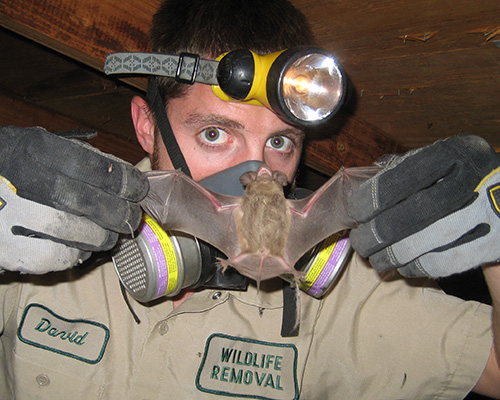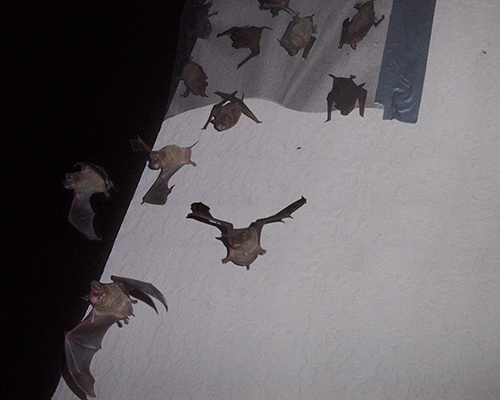Portland's Best Bat Removal
We've been voted Portland's best bat removal company the past two years!
Get in touch
Bat Experts
Rapid Response
Trained & Educated
Licensed & Certified
About Portland Bat Removal
Welcome to portlandbat.com. We are the only qualified bat removal company in Portland, Oregon. We are a locally-owned and operated bat control company. Our company provides bat removal services to residential, commercial, and municipal customers. Owners are directly involved in the daily operations of the company, and the development of new bat control techniques, materials, and technology. We pride ourselves on professionalism, integrity, and a strong commitment to our awesome customers, our incredible staff, the great industry we represent, and our lovely ecosystem we passionately strive to conserve. While there are 47 bat species in the United States, there are only four native to this region. Coincidentally, these four species are listed on the Endangered Species List because of the rapid decline in their numbers due to the spread of a viral fungus known as White Nose Syndrome (WNS). This makes it illegal to kill or harm bats. That's why we're a strong advocate of humane removal processes. Although bats are beneficial to the environment, they pose a serious health risk when they come in close contact with humans and pets. To ensure your safety, you should never handle bat removal yourself. Instead, only licensed and qualified professionals should perform bat removal and exclusion services. As seasoned professionals, we ensure that exclusions are carried out at the right time of the year with the right approach to eliminate the risk of contact and exposure between people and bats. We locate the entryways, install exclusion devices to get them out and seal up the holes once they've all left. We also perform full attic clean-up and restoration. We believe in prompt delivery; hence, we're available 24/7. We are the best at what we do, and that's why we have 5-star ratings on Google, Yelp, and Angie's List. We operate 24-7-365, so don't hesitate to call us at 503-664-4725 to discuss your bat problem and schedule a fast appointment.

Residential
We are experts at removing bats from residential properties. Whether you have a single bat trapped in your house, a colony roosting in your attic, and/or various other problems, there is no need to worry! During our removal process, we make sure to inspect your entire home carefully, tracking down all the entrypoints bats are using to invade your place. Next, we perform a process called live exclusion (where no bats are harmed and all exit your property), then seal all entry holes completely shut. We also take care of the cleanup process after, so your home is safe and clean!
Learn MoreCommercial
Besides residential areas, we also have a wealth of experience removing bats from commercial properties! We begin by investigating the area for possible bat entrances, covering holes even as small as 1/4 of an inch. Through our live exclusion process, bats leave the building through one-way exits, and we seal up every hole afterward. Once the bats have been removed, we perform a cleanup process. This includes dealing with guano, replacing damaged insulation, and decontaminating the place.
Learn More
Contact us for bat removal today!
What Our Customers Say
I had a bat flying around in my house at 9pm, and CITY bat removal came right out and caught it in a net.
Sarah Lakewood
I had an annoying colony of bats stuck in my attic for a while before I finally decided to call for help. They were able to quickly and thoroughly solve the problem!
Brandon Chung
They did a great job clearing my attic of bats and didn't hurt any of the creatures.
Charlotte Demers
The technicians at CITY Bat Removal are skilled, professional, and know exactly what they're doing. Would highly recommend.
Mark O'Connor
My house stank of bats and their guano inside my wall. CITY Bat Removal not only removed the bats, they also got rid of the smell!
Alexis Ramirez
.jpg)
How do bats use echolocation?
You've no doubt heard the expression "blind as a bat", and might have even assumed it to be an accurate one. Since bats are largely nocturnal creatures, we tend to assume that they have poor to non-existent eyesight, but the truth is a little more complex than that. In order to understand how bats use echolocation to "see" their surroundings, we first need to determine the state of their eyes.
So, are bats blind?
In spite of common assumptions, no, bats aren't blind at all. Their eyes are differently developed than those of a human, or another animal, but that does not make the bat blind. Because of a bat's nocturnal nature, its eyes have in time adapted to very poor illumination. They do not see the way we do, in the daytime, because they don't need to. Bats are usually sleeping at that point in the day. What they do need to see, however, are obstacles and prey as they soar through the sky in the pitch black. So of course, it stands to reason that their eyes have developed an extreme sensitivity to light, but also an extremely keen vision in the darkness.
So if you look at it like that, bats can actually see things in the night much better than a human would. So to answer the question, no, bats aren't blind. But their eyesight is indeed different, and to aid their navigation through the darkness, their bodies developed a fascinating ability to communicate through echolocation.
What is echolocation?
Echolocation is this almost unbelievable process through which some animals are capable of detecting objects and other animals in their environment by the echoes those things/creatures emit. It is the ability to pinpoint something in space by paying attention to the sounds and waves that something gives out, and it's a common method by which some animals stay safe and thrive within their group.
What animals rely on echolocation?
Echolocation is a common practice for some aquatic creatures, such as dolphins or whales, but also for some birds, shrews, and indeed, bats. All of these animals use the process of echolocation to orient themselves in space.
How do bats use echolocation?
Bats use their mouths or noses (depending on the particular species of bat) to let out these extremely high-pitched screeches and cries, too high for a human ear to pick up on them, but just enough for another bat to. These noises, depending on the frequency, alert the other bats of the first bat's location. This helps them keep their place inside a colony, as it soars through the sky, and also helps them avoid collisions in the air.
The second bat's ears pick up on the signal, and within a matter of seconds, its brain judges the location and the message sent by the first bat and correctly determines the right course of action. The practice of echolocation allows bats to avoid an impressively large amount of hits and accidents.
But that's not all that echolocation is used for. Bats also rely on echolocation to "see" their environment. By paying attention to the echoes emitted by certain objects in space, they manage to accurately locate obstacles in their path and avoid them. They also use echolocation to figure out the location of prey, when out on a hunt.
Why can bats do this?
While experts are still a tad unclear on the matter, it is believed that bats developed this ability to echolocate as a result of their nocturnal lifestyle. Some think that their ability to "see" with their ears has directly influenced their alleged poor eyesight, but scientists doubt that to be the case. If anything, bats' ability to echolocate came afterward, so there's probably little to no connection there.